Madeira – so-called Hawaii of Europe, is one of the most beautiful places to visit in Europe.
To explain why we found ourselves in Madeira, me & my family always travel somewhere for Christmas. We extended last year’s Christmas to a month and spent it in Hawaii (Big Island article here, Kauai article here and Maui article here). But this year it was a little more difficult to travel due to covid, so we looked for a European destination and Madeira was the best option, given the direct flight from Prague and mild temperatures.
We paid for our tickets about as much as I did years ago for a return ticket to Zealand, but hey, it was Christmas. And so, on December 20th, we hopped on a direct flight with Smarwings. We all landed in Funchal, and the wonderful week began. We rented a huge two-story villa on the south coast for a week, rented two cars at Sixt, and left the next day to explore the island’s beauty.
Madeira – what to know
But first, a little something about the island. Madeira belongs to Portugal, so Portuguese is also spoken here. A large proportion of people, especially from the tourist sector, speak English, inland people don’t speak English almost at all. The currency here is Euro and the prices are similar to southern Europe. Car rentals work great here, but I’d only recommend those to really skilled drivers. The roads are good, but apart from one highway on the south, the roads tend to be 15 or more degrees steep, and I’d estimate the number of serpentines to be several thousand. Figure that what’s 10 kilometers away and doesn’t lead down a highway, you’ll be driving at least 25 minutes. The capital is Funchal, where there is also the only airport.
Madeira has a very favourable temperature all year round, generally not above 25 degrees Celsius in the summer and not below 15 in the winter. It rains often on the north coast, and the south is slightly more pleasant. The inland is very sparsely populated because of the high mountains, so most of the population lives on the coast.
1 Levada das 25 Fontes
Levada is a unique water system. They’re all pretty similar, more or less, but visiting at least one is a duty. So on our first day, we set off for Levada das 25 Fontes, at the end of which there’s an amazing waterfall.
We parked in the lookout and started hiking down the road. Don’t be fooled, even though it’s an asphalt road, it’s closed to cars. At the end of this road you’ll find a bistro where we stopped for lunch. The whole hike took about four and a half hours with lunch, but we kept stopping and enjoying the laurel woods. Except for one steep hill up the asphalt road, the path is really light and flat.




















2 Ponta do Pargo Lighthouse
We made it to the nearby lighthouse at sunset, located in the Ponta do Pargo area. The westernmost point of Madeira is the place to watch an undisturbed sunset. There’s nearly 400 metres of cliff underneath you, so be careful, while walking on the edge.
There’s a parking lot right by the lighthouse where you can park comfortably. But given the accessibility, you can count on not admiring the sunset alone.













3 Pico Arieiro & Pico Ruivo
Of course, we couldn’t miss Madeira highest mountain called Pico Ruivo. It rises 1861 metres above sea level and has several hiking trails. The most beautiful but most difficult, runs from Pico Arieiro – and that, of course, is exactly what we chose.
The day’s trip began with a sunrise on Pico Arieiro (1818 m above sea level), which can be reached by car. After the sunrise, we began a journey of more or less 10 hours. I never thought an mountain this high would give me a hard time, but we almost died out there.
We climbed an elevation of over 1,000 meters. The narrow path twisted in all directions, up, down, sometimes up steep stairs or ladders, sometimes through a tunnel in the rock. Either way, it was definitely the most beautiful hike we’ve done in Madeira.















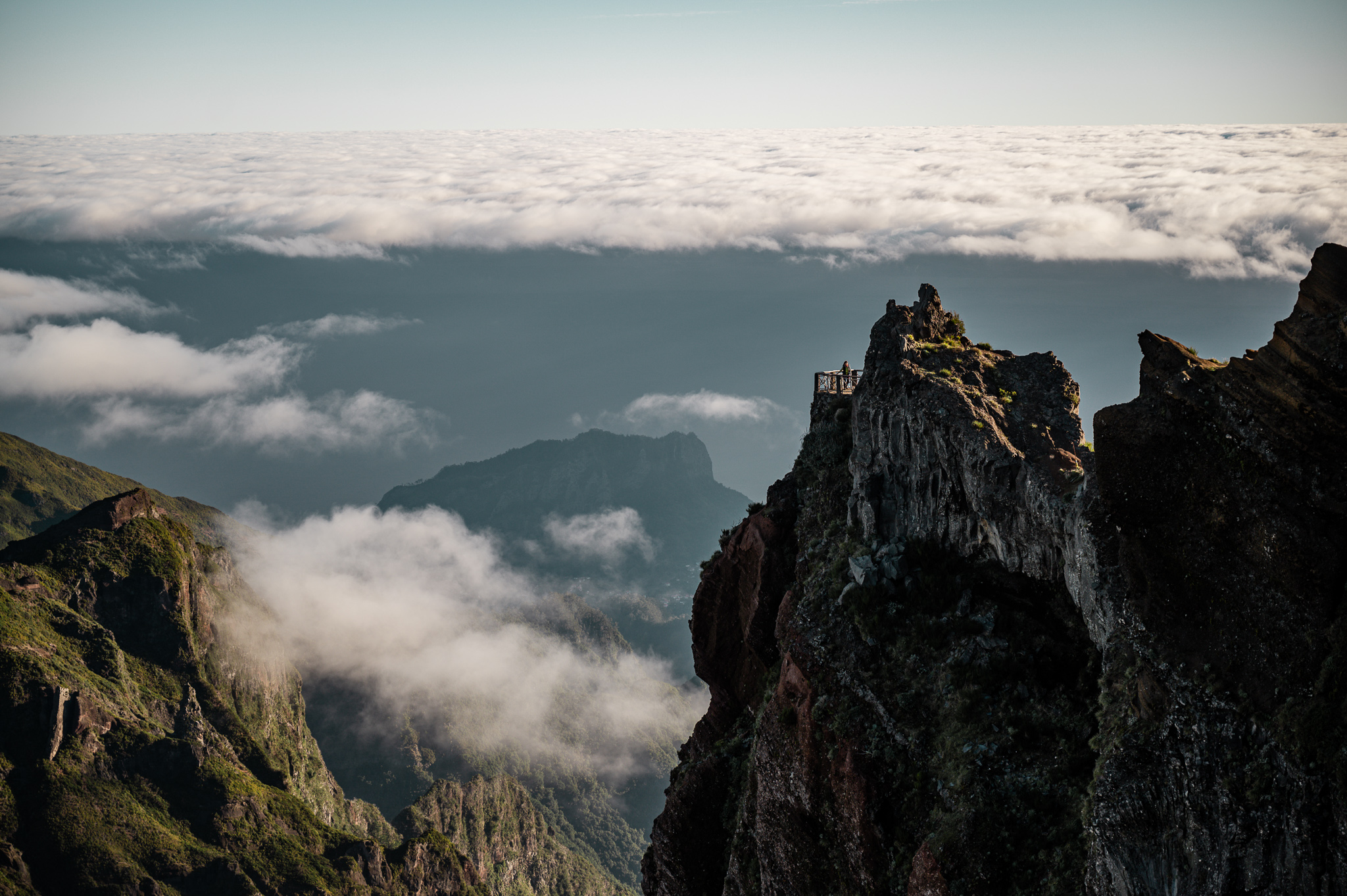
When we reached the top of Pico Ruivo, we were well above the level of the clouds, with the tips of sharp rocks peering out. The dogs were all worn out and Gin even fell asleep at the top. My boyfriend’s parents didn’t go on this crazy hike, so they picked us up on the other side at Achad do Teixeira. Which we really appreciated, because going the same way back would have finished us off for another day. We blamed it on the dogs, of course, so we wouldn’t feel so embarrassed that we didn’t feel like hiking back again, haha:)




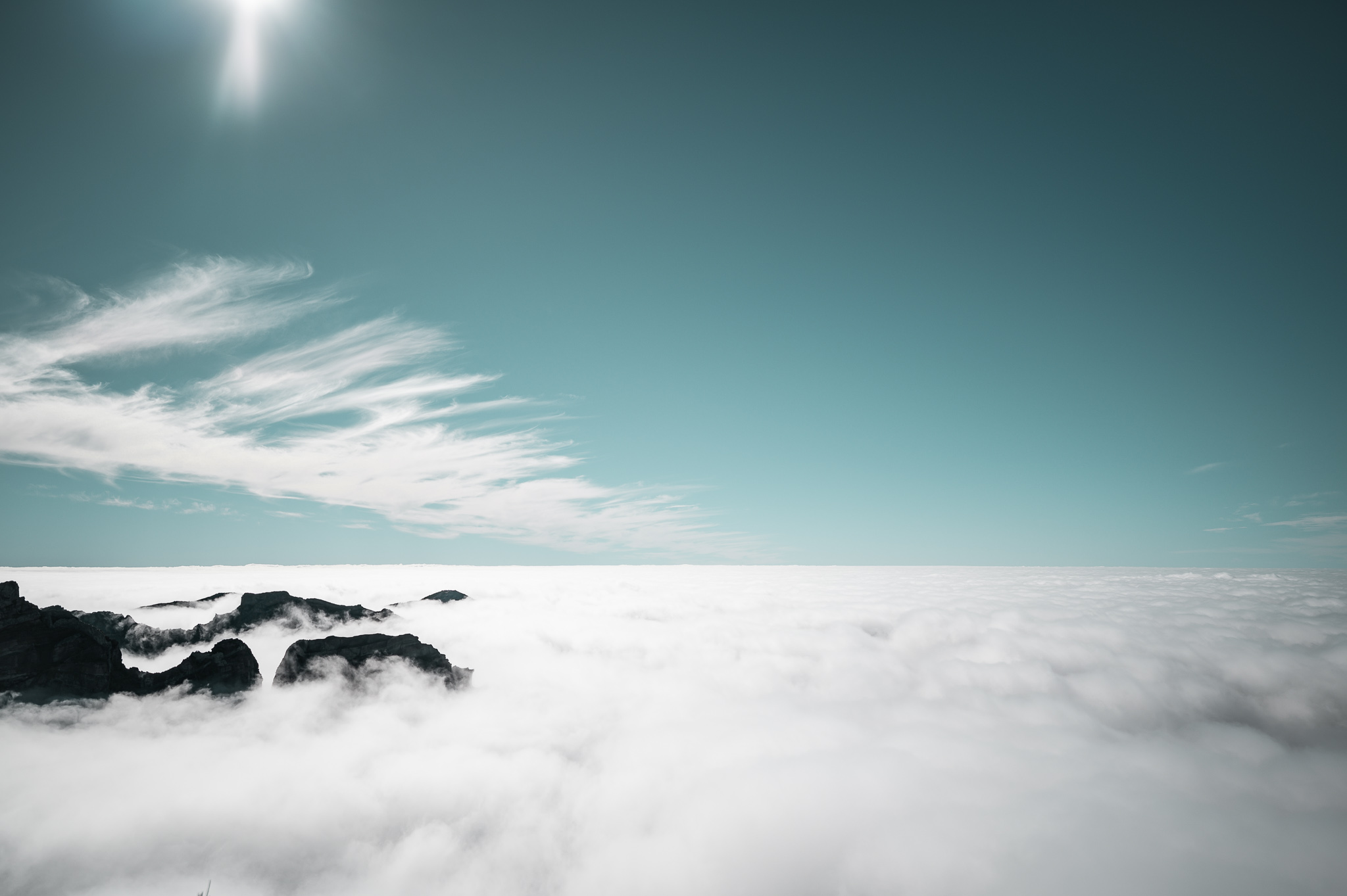






3 Santana
That day, we made another stop at the town of Santana in the north of the island. This little town is interesting thanks to its original houses, which now serve as a kind of open-air museum. You’ll find about ten of these in Santana, the most of them are located right in downtown. In a few of them you will find displays of traditional Madeira crafts and products – wine or lace. Some are preserved better than others and you can look at what the interior looked like in history. Due to Christmas, the cottages were also decorated.
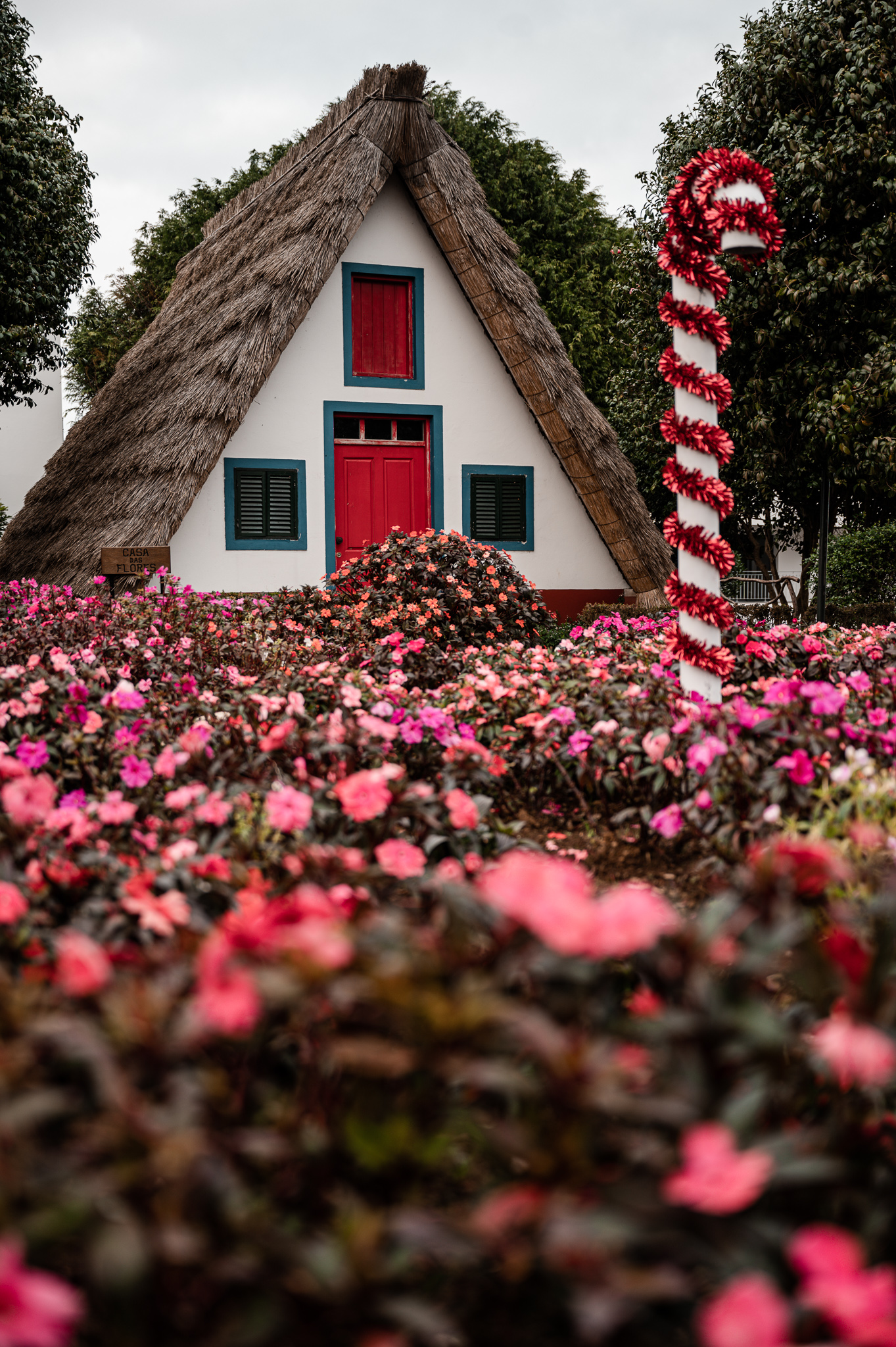
4 Ponta de São Lourenço
After the crazy hike to Pico Ruivo, we thought how we’d sleep in the next day. Only until I came up with a plan that, unfortunately for us, involved a sunrise on the Ponta de São Lourenço. The other members of our group refused to get up at 5.30, so my boyfriend and I set off on our own (despite his numerous complaints to the main organizer of the program – me).
The sunrise was epic. As soon as the sun rose, we set off for the very tip of the peninsula. A journey of about 4 kilometers took us along beautiful cliffs, lined with ocean from both sides. This walk was probably the nicest in all of Madeira. Wait, didn’t I say that already?














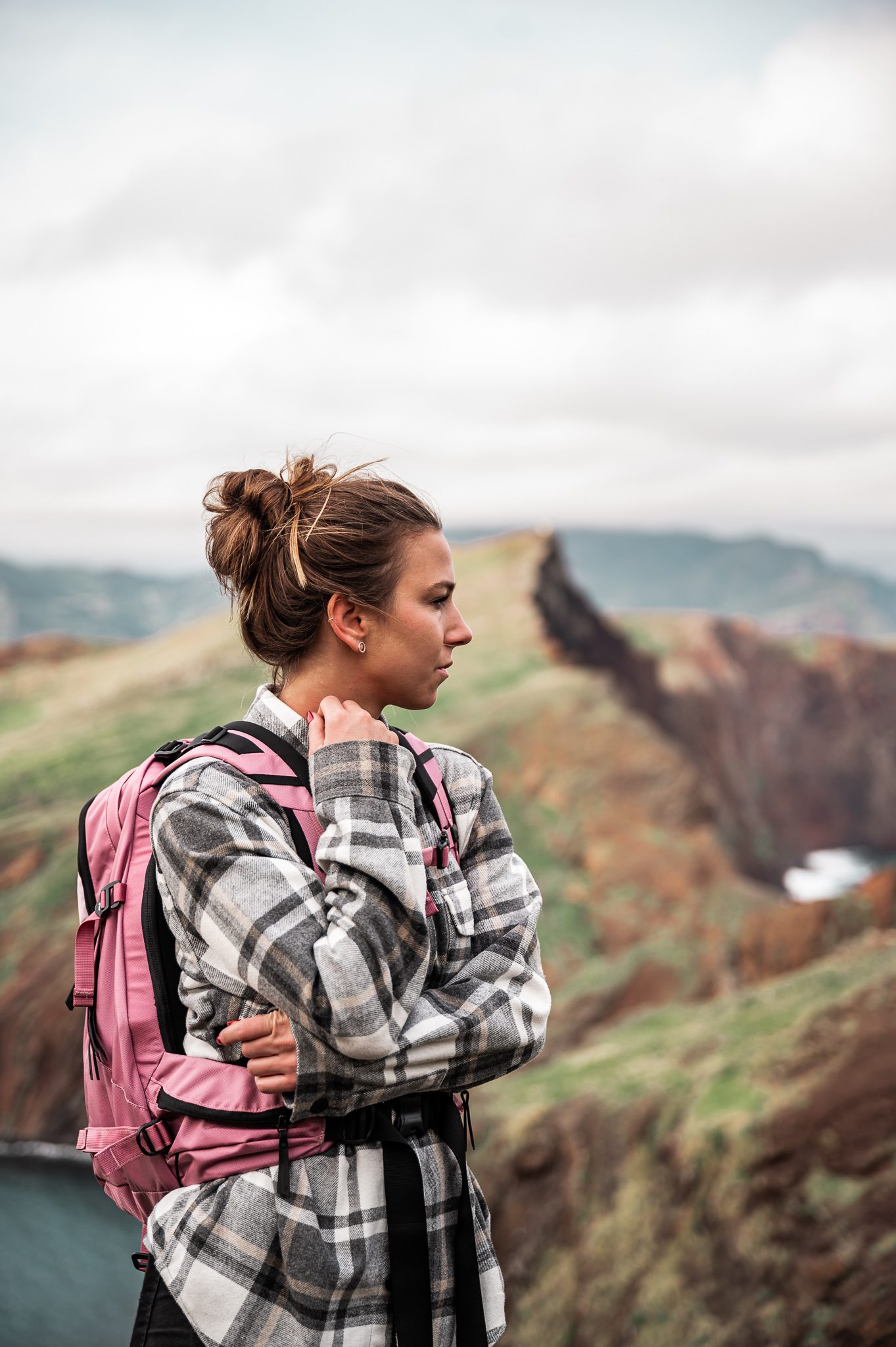









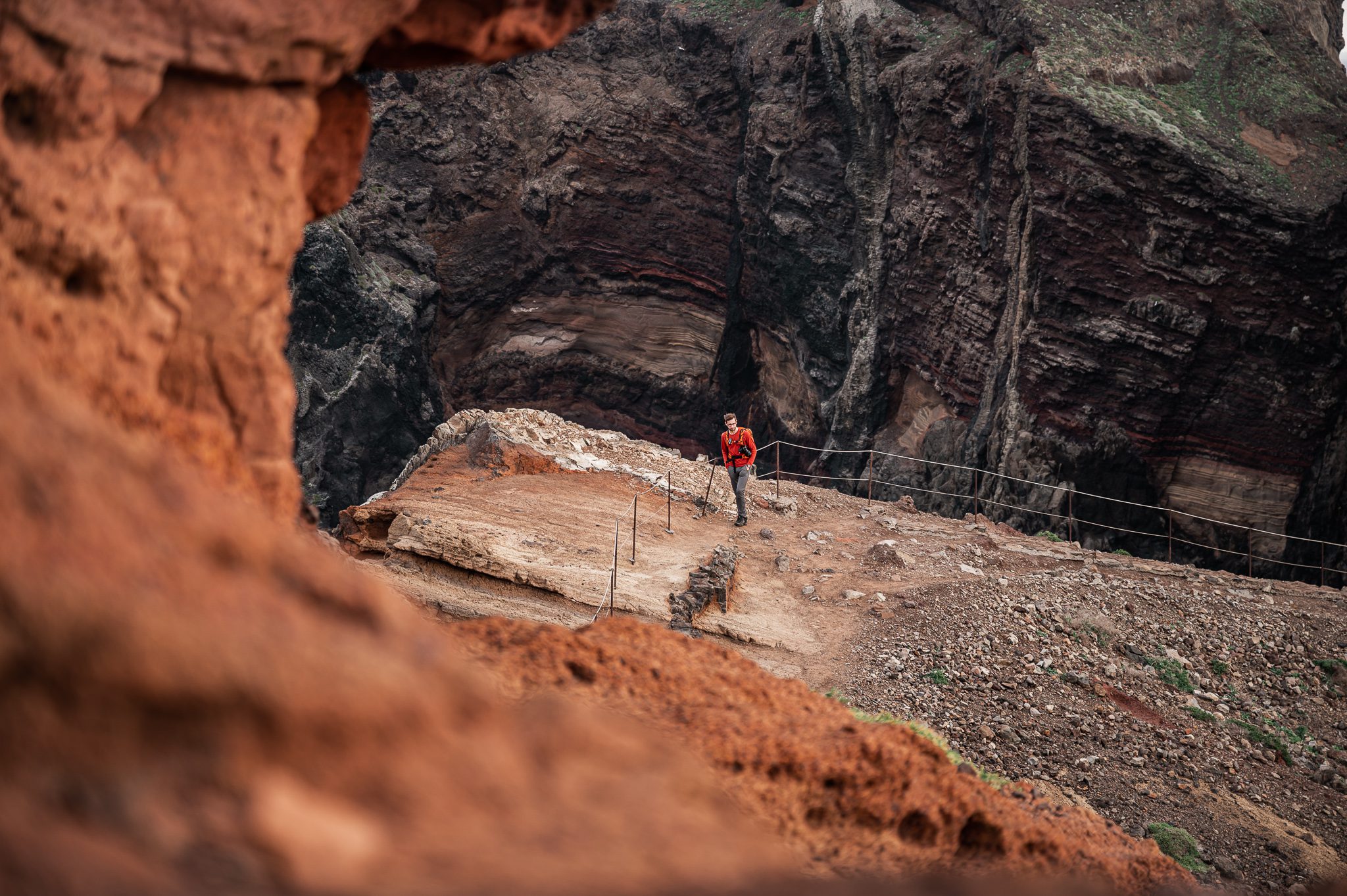

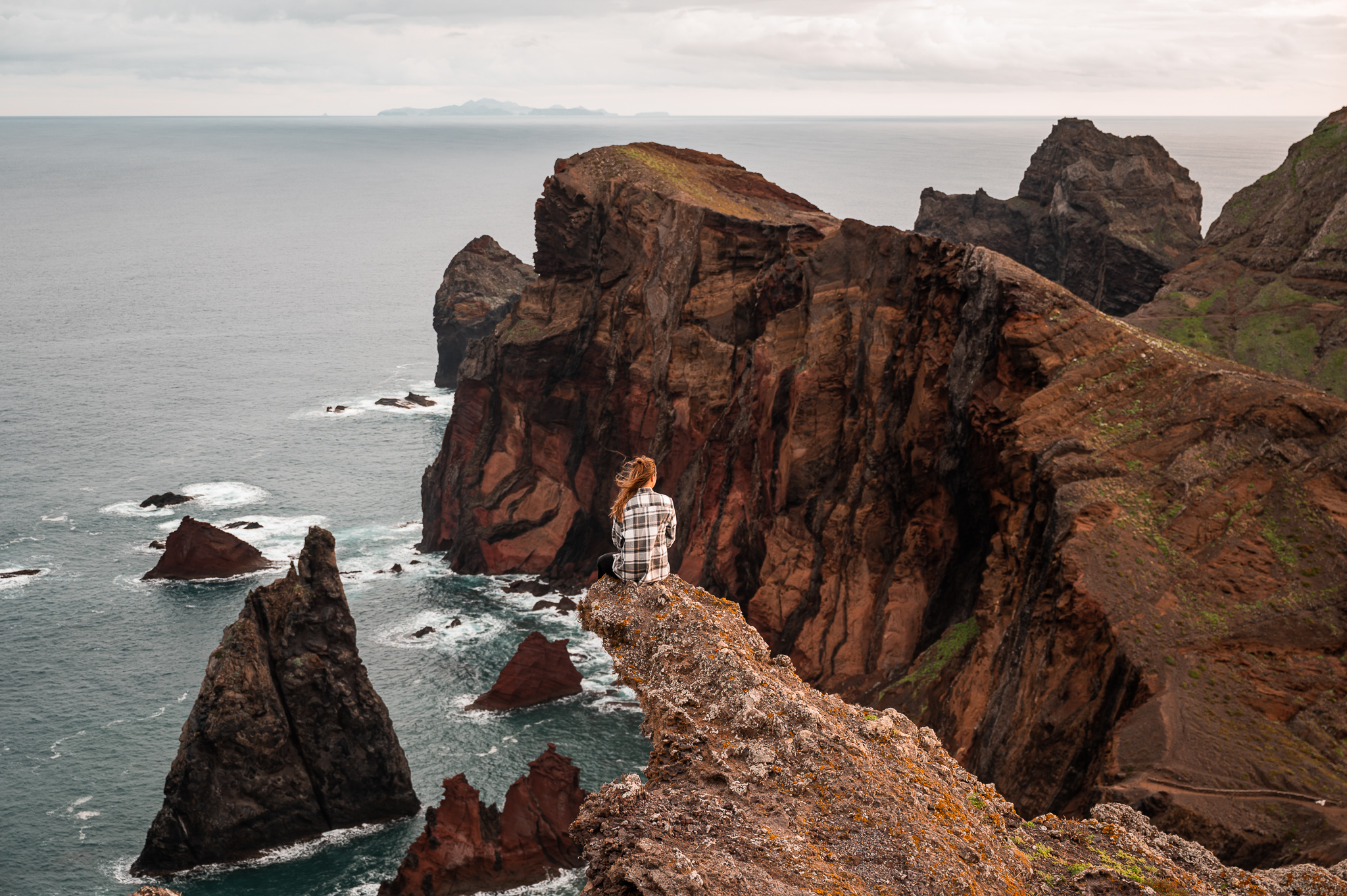
5 Cristo Rei
Why travel all the way to Rio De Janeiro when you can also see the statue of Jesus Christ in Madeira? It’s a lot smaller, but it’s just as photogenic. The 20-metre sculpture is meant to protect fishermen, is illuminated at night and is of landmark importance as a lighthouse for short sea shipping boats.




6 Cape Girão
For the sunset we came to the view of Cape Girão, which stands out for its glass floor. The view was breathtaking. Admission is free.
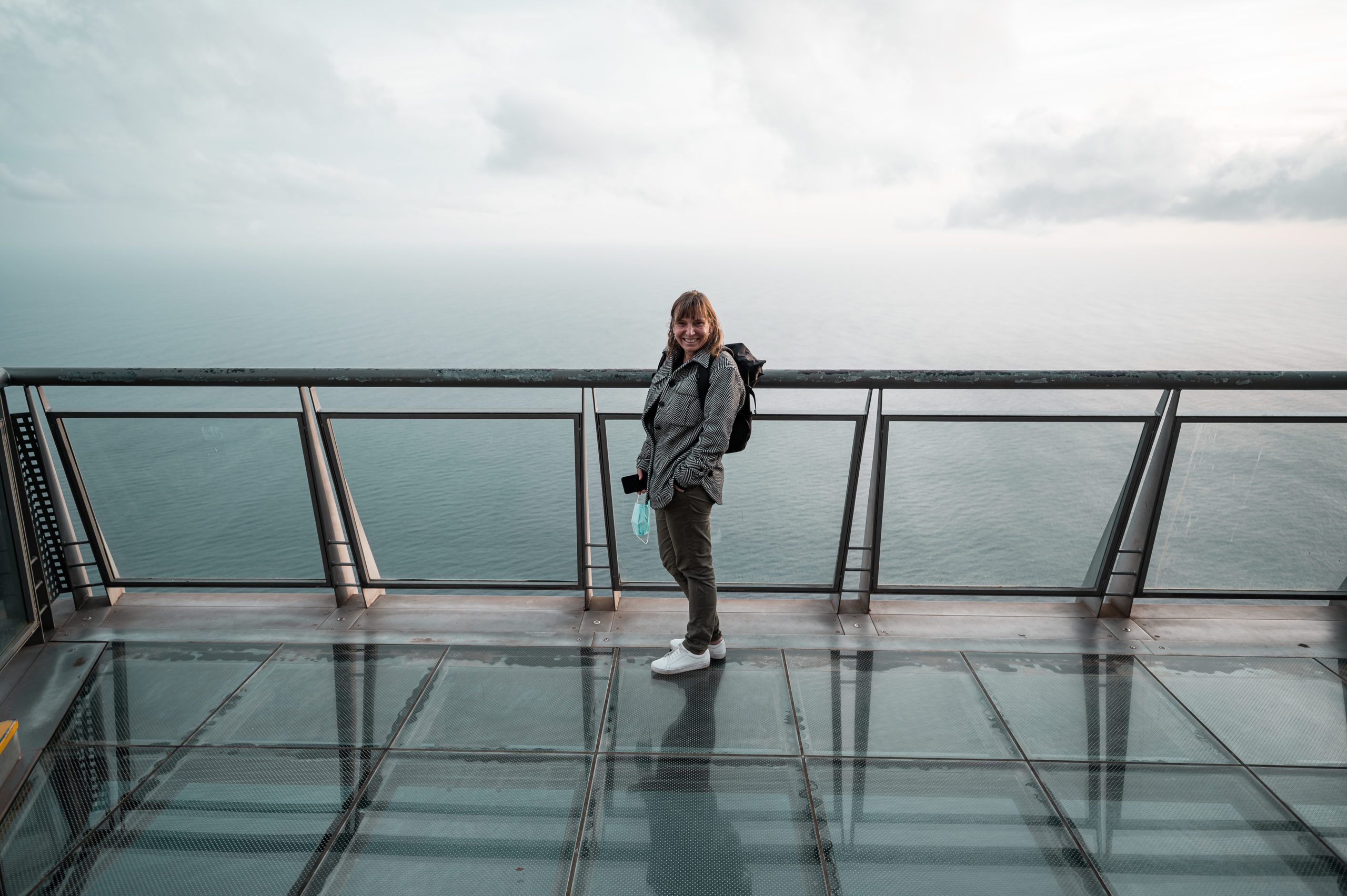


7 Fanal
Christmas Day was here, and we finally said we’d rest and leave the long hikes for the next few days. We got in the car and headed off to two places that are accessible by car and require no physical effort.
The first is Fanal Forest – a laurel forest that is mostly covered in fog. We took a short walk through the trees, each one being unique and deserving a picture.
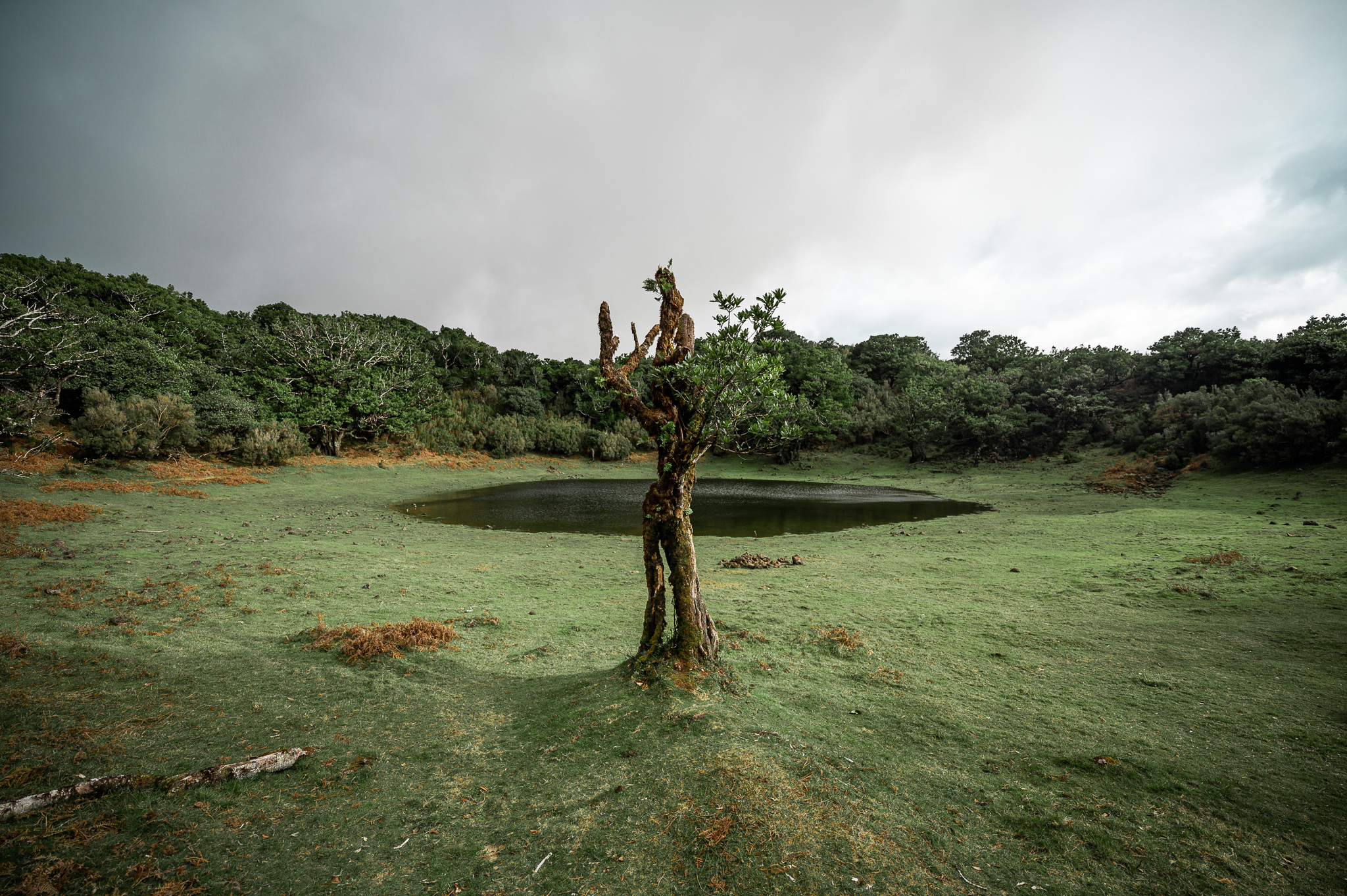












8 Porto Moniz
The second stop was the seaside town of Porto Moniz, located in the northwest of Madeira. You can admire the natural pools, which boast clear turquoise water. The water is rough in the sea, but you can swim directly in the pools. Nobody except my mom had the guts. Madeira generally has a wonderfully clean ocean, so it’s perfect for a water enthusiast like my mom. You won’t find many sandy beaches, though, it’s all rocky stuff, just like Porto Moniz.


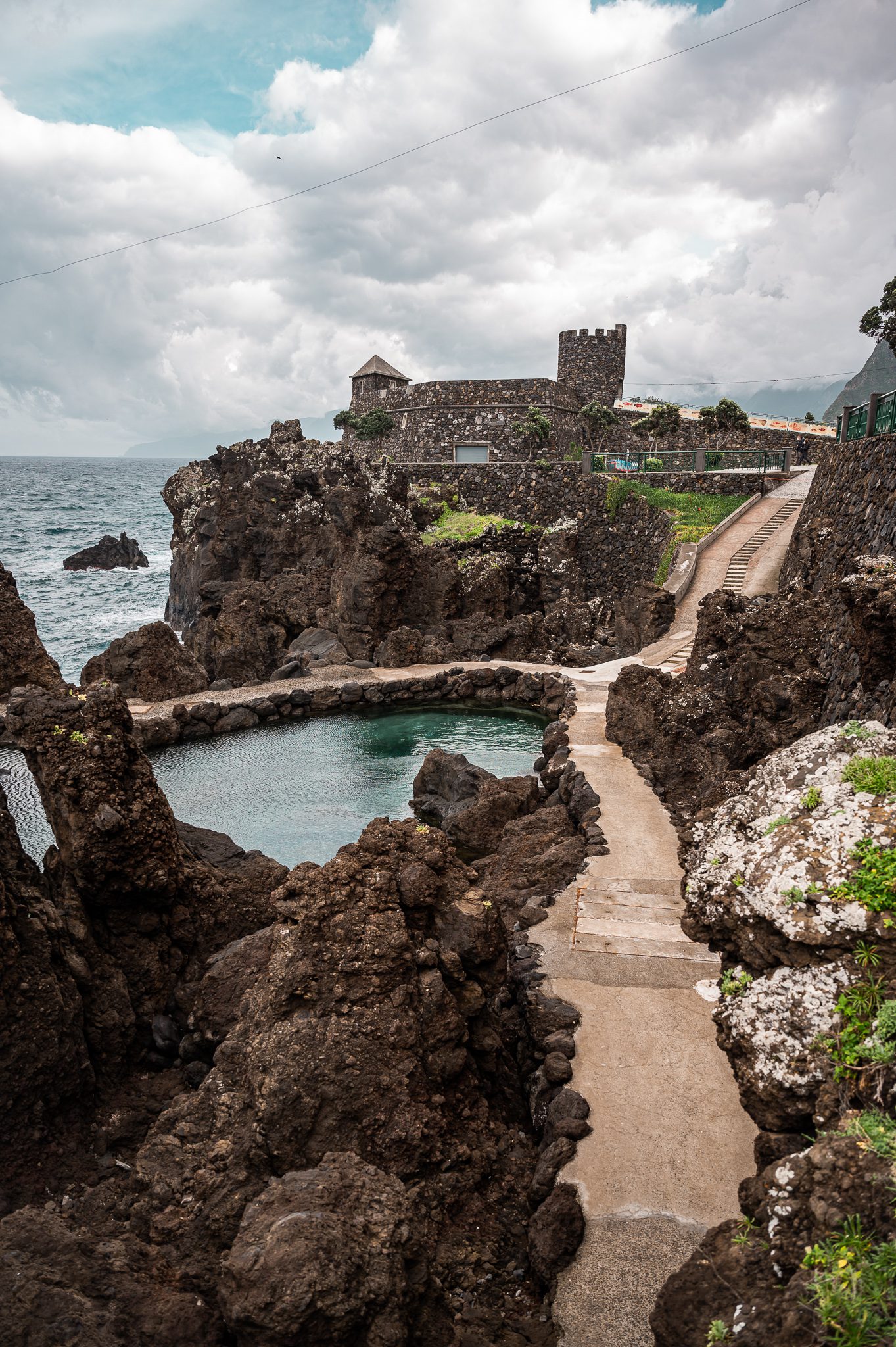













9 Vereda Dos Balcões
The Balcoes viewpoint is a uniquely designed vista in the very centre of Madeira, from which you can get a view of the typical Madeira greenery. The hike to the outlook is about 800 metres long and is completely flat, which is not generally typical for outlooks. We had the wind blowing like crazy, but to launch a drone here, we’d walk away with amazing footage.
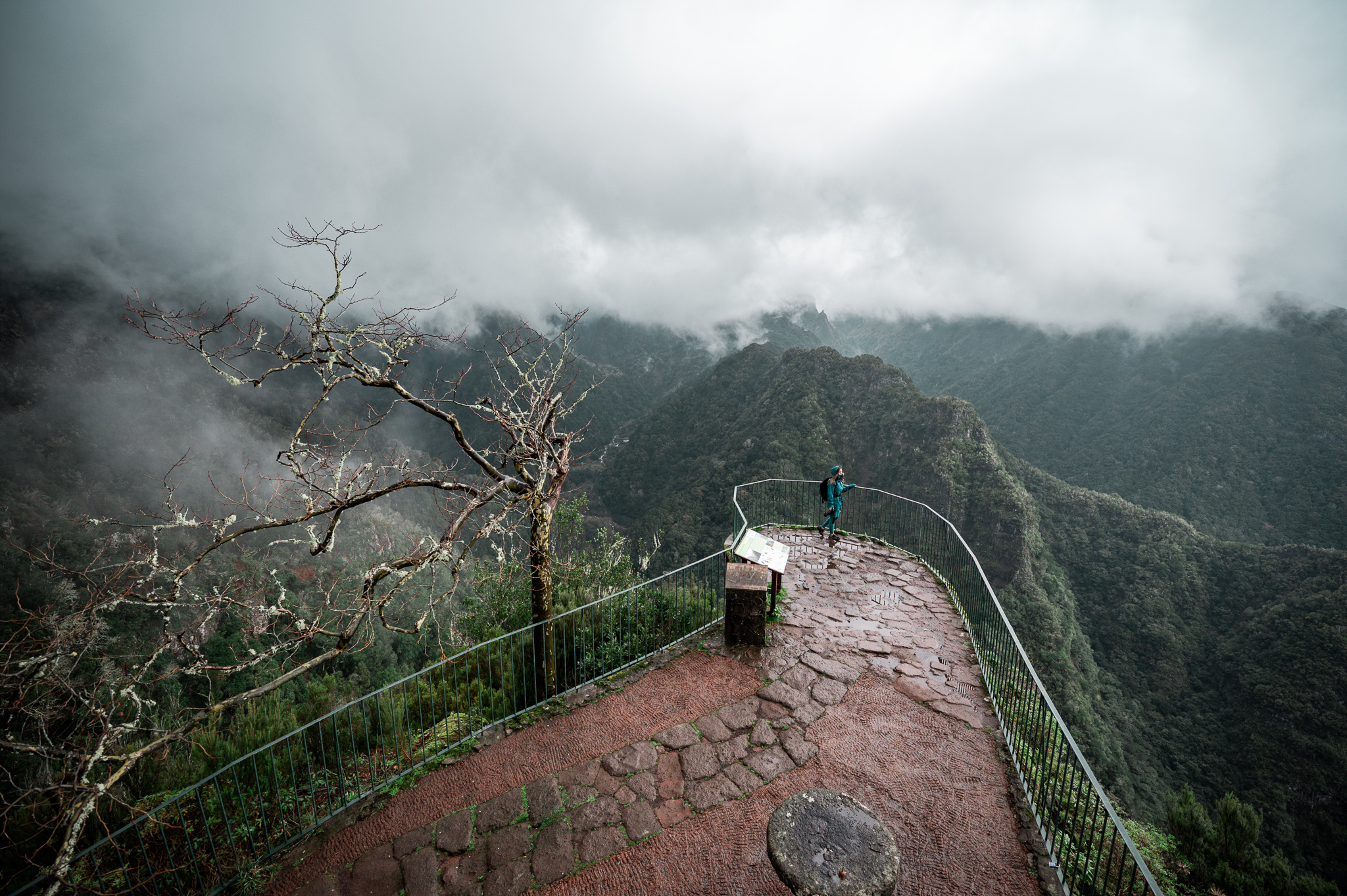



And then it all started.
Flash floods
We wanted to go home to the villa, but we were very hungry, so we thought we’d stop at a gas station. It was Christmas Eve, and most of them were closed. There were two ways to go home – the north road that ran through the mountains, or the south road that ran along the highway. There were more gas stations on the northern one, which increased our chances of bumping into an open one.
But!
It started raining really hard on the way north. And the closer we were getting to the mountains, the more it rained. From time to time there was a rock or branch lying on the road, which we didn’t pay much attention to – and that was a huge mistake. From the forecast, we knew it was going to rain, so we weren’t even surprised. When we drove through one of the tunnels, through which water was going like crazy, that’s where it got a bit disturbing. I’d say that 3/4 of our tires were below water.
We were approaching the town of St Vicente and suddenly we saw a man waving at us. We pulled up to him and he started yelling something at us in Portuguese. We couldn’t understand a word he said, but we could tell from his tone that something was wrong. So we went back towards the tunnel, thinking that we would take the south side. When we got to the tunnel, we couldn’t believe our eyes. The tunnel was so flooded and no one could get through. The current ran through it about a metre high, and our Renault Megane wouldn’t have a chance. A lot of cars were turning in front of the tunnel and going in the direction we had just come from.
That left us with no choice but to turn around again and try the original route. This time we drove past a waving guy to see what was going on. We came to a serpentine that was totally swamped with mud and trees and rocks. A landslide like I’ve never seen.
Trapped
So we turned around again and drove to a small valley, where cars started coming in from both directions. There was a parking lot, a small pub and a gas station (closed, of course). It was pouring rain and there was an incredible amount of water on the road with nowhere to go. The owner of the pub willingly opened it and poured us all hot tea. She said she’d never seen anything like it here in 10 years.
After two hours, a tractor came to break the bridge side, giving the water room to run off the road and into the creek. Then he drove off into the serpentine, presumably to clear away the landslide. By that time, there were a good 20 people trapped with us.
It rained continuously for the next 12 hours, and we stopped hoping to get home today. We were blocked from both sides – from one by a flooded tunnel and the other a collapsed ground, trees and rocks.
Evacuation
They evacuated us around midnight. The tractor finally managed to clean the road a bit, so we could all pass that landslide. We drone in a convoy to the closest village, where a small hotel was located. They gave us all rooms but none of us could sleep given the noise from falling rocks.
I know from the hotel that road crews worked all night to clear at least one of the roads. Around noon on the second day, they were done, and we were able to drive home. The day before, I didn’t even think about documenting the disaster, but here are some photos from the next morning. People’s basements and homes were flooded, parked cars were out of order and full of mud. When we asked the owner of the villa we were staying how the south had turned out, he didn’t even know about anything! They said the sun was shining in the south. How ironic.
If we had opted for the southern route, we wouldn’t have gone through anything like this. On the other hand, no one was hurt, which is important. Madeira surprised and frightened us at the same time. I’ll never forget this experience.




10 Curral das Freiras
The Valley of the Nuns, or Curral das Freiras, is a beautiful little village located in the mountains. An almost aerial view of the village can be seen from the platform of Eira do Serrado (1006 m above sea level). The road to Curral das Freiras is incredible too, because it’s set on a slope in such a way that anyone with a fear of heights should definitely not drive.
And why is it called the Valley of the Nuns? The valley had been owned by the Santa Clara Women’s Monastery of Funchal since 1462. In 1566, the nuns hid here from French pirates during their raid on Funchal and since then locals call it like that.











11 Ponta do Sol
Madeira and Christmas decorations are two synonyms. Christmas is celebrated here in big style, and so you can admire all kinds of decorations on houses and in the streets. We couldn’t leave Madeira without walking through a small town in the dark. We went to Ponta do Sol, which was the closest town to our villa. I’ve never seen such decorations in Prague.













12 Seixal Beach
The departure was coming, and we were getting more and more groused that we hadn’t stayed here for 14 days. The last stop on the way to the airport was Seixal Beach, which is known for its black sand. Honestly, we weren’t that impressed, so I don’t have a single picture of it. I picked up the last three photos along the way.



And a conclusion?
Madeira was so amazing that we decided to come back sometime. A week is certainly not enough, but unfortunately, the tickets for two weeks were sold out.
I think we’ve all enjoyed Christmas, including the dogs, and I’m looking forward to what we do next year! Madeira again?
P.S.: Madeira is supposed to be great for camping. We’ve discovered some great tent spots ourselves, so next time we could take it more casual and sleep in a tent 🙂
P.S.II: If you like my pictures, check out my Instagram as well! 🙂
E.

